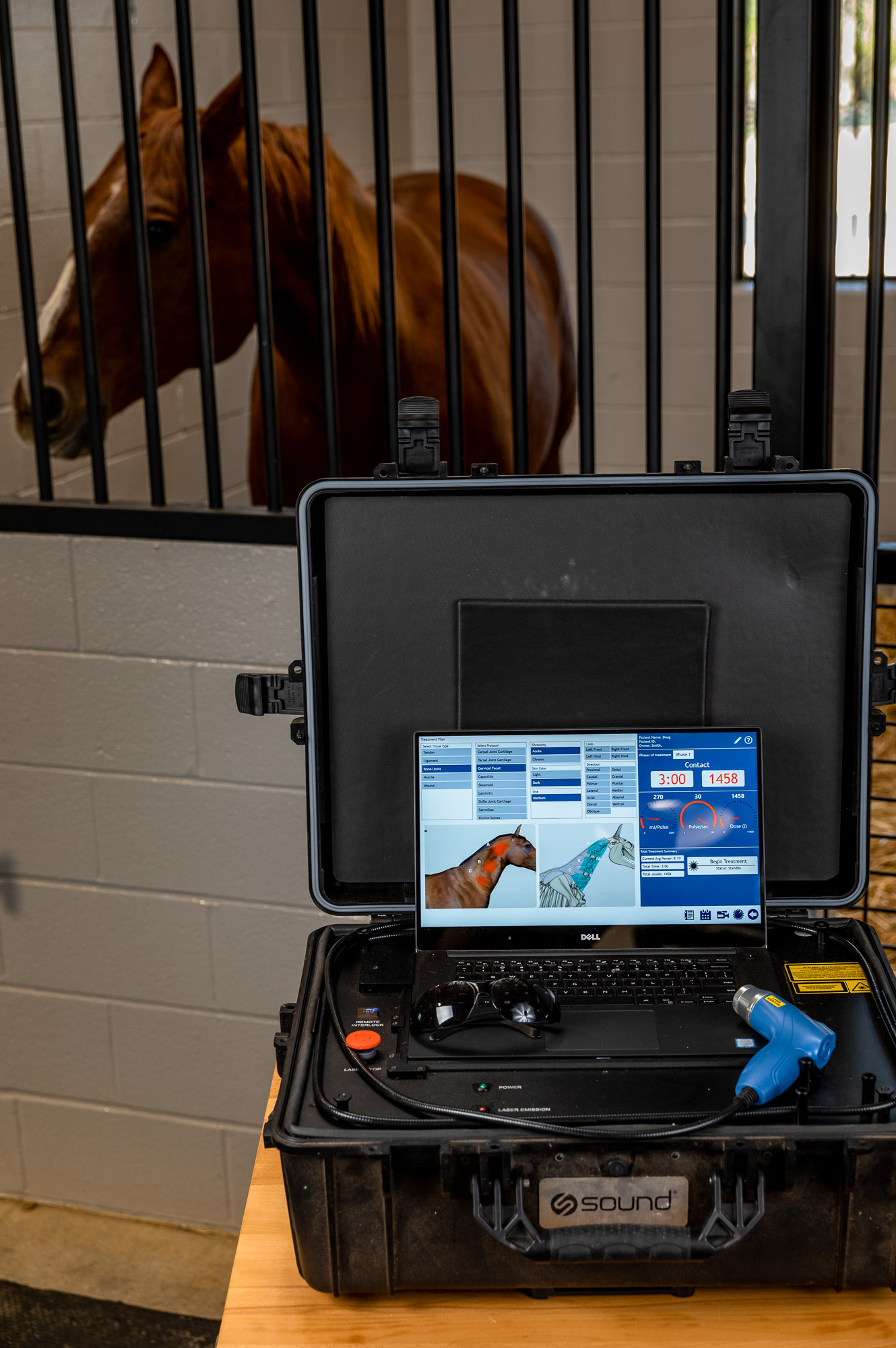Equine Therapy for Trauma Recuperation: How Equines Help Heal Emotional Wounds
Equine Therapy for Trauma Recuperation: How Equines Help Heal Emotional Wounds
Blog Article
Assessing the Efficiency of Laser Therapy in Equine Treatment for Injury Rehabilitation
The examination of laser treatment's efficiency in equine injury recovery pivots on several factors, consisting of healing time, pain mitigation, and cells regeneration. Vets often observe remarkable end results with laser therapy contrasted to standard methods, positioning it as a vital aspect in equine treatment.
Understanding Laser Therapy
Laser treatment has actually ended up being a critical tool in veterinary medication, particularly in the therapy of equine conditions. Known for its non-invasive nature and efficacy, laser treatment entails the application of particular wavelengths of light to stimulate tissue repair and reduce inflammation. This therapeutic technique is increasingly favored for its ability to increase the recovery procedure in horses experiencing a range of bone and joint injuries and chronic conditions.
The key device behind laser therapy is its capacity to improve mobile features. Furthermore, laser treatment promotes vasodilation, improving blood circulation and oxygen shipment to damaged cells, thus accelerating recuperation.
In equine medication, laser therapy is specifically useful for problems such as tendonitis, osteoarthritis, and wound recovery. The technique is lauded for its pain-relieving residential properties, enabling steeds to gain back flexibility and feature much more rapidly. Veterinarians also appreciate its marginal adverse effects contrasted to various other treatment methods, making it a trustworthy and secure choice for equine care.

How Laser Treatment Works

Upon absorption, these photons activate a series of biochemical changes, enhancing mitochondrial function and resulting in boosted adenosine triphosphate (ATP) manufacturing. This rise in ATP accelerates mobile metabolic rate, advertising cells repair service and regrowth. Additionally, laser treatment regulates inflammatory feedbacks by influencing cytokine degrees and decreasing oxidative tension, thus alleviating pain and swelling.
An additional significant aspect of laser treatment is its role in boosting microcirculation. The therapy advertises vasodilation, enhancing blood flow and oxygen distribution to damaged tissues (Equine Therapy). This helps with the removal of cellular particles and sustains the spreading of fibroblasts and collagen synthesis, vital for wound healing
Clinical Evidence
The efficiency of laser therapy in equine therapy has been corroborated via different clinical research studies, showcasing its therapeutic possible throughout an array of conditions. A research study conducted by Turner et al. (2012) showed that steeds treated with low-level laser treatment (LLLT) for ligament injuries exhibited sped up healing contrasted to those receiving conventional treatments.
Likewise, research study by Johnson and coworkers (2015) focused on equine muscle injuries, disclosing that laser treatment significantly accelerated muscular tissue visit their website fiber regeneration and lowered muscle mass rigidity. Medical evaluations have actually revealed that laser treatment can reduce chronic problems such as osteoarthritis.
Veterinarian Insights

Veterinarians also appreciate the adaptability of laser treatment. She points out that laser therapy can be customized to the certain demands of each steed, guaranteeing ideal results.
Moreover, vets value the capability to incorporate laser treatment with other treatment methods. This multimodal method can improve total therapy effectiveness, giving a detailed solution for equine recovery. Such recommendations from skilled experts underscore the growing approval and application of laser treatment in equine medication.
Practical Factors To Consider
A crucial facet of implementing laser therapy in equine treatment entails comprehending the useful considerations that ensure its efficacy and security. First and primary, it is crucial to choose the suitable laser tool, as different kinds differ in wavelength, power, and penetration depth. Equine Therapy. Veterinarians must be skilled in these parameters to tailor treatment protocols effectively to each injury kind
Additionally, the regularity and duration of laser therapy sessions need mindful planning to optimize therapeutic benefits while reducing any kind of potential adverse effects. Constant tracking of the equine's feedback to therapy can assist needed modifications in the therapy regimen. Developing a risk-free and regulated setting during treatments is additionally necessary to prevent unexpected direct exposure to laser exhausts, which might harm both the equine and the trainer.
Training and accreditation of workers carrying out laser treatment are vital to ensure correct method and to copyright safety criteria. Furthermore, preserving exact documents of each session, consisting of laser setups and observed end results, is vital for examining the overall efficiency of the treatment and for making data-driven decisions.
Verdict
Laser therapy has arised More hints as a reliable method in equine injury rehab, supplying considerable benefits in Full Report recuperation time, discomfort alleviation, and cells recovery. Scientific studies underscore significant renovations in problems such as tendonitis and osteoarthritis, credited to enhanced mobile feature and raised ATP production. Veterinarian monitorings corroborate these searchings for, highlighting premium results compared to traditional therapies. For ideal outcomes, continuous monitoring and personalized treatment protocols continue to be necessary in leveraging the complete possibility of laser treatment in equine treatment.
Report this page